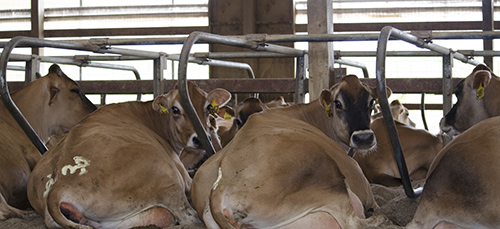
As the latter half of the year looms, our thoughts have started to turn toward harvest and our winter checklists. While temperatures have begun to moderate from their summertime highs, our cows may still be feeling the early September heat.
When it comes to cooling, fans and misters or soakers have become the norm. Conductive cooling from below, though, could serve as a future heat stress solution.
Researchers from Cornell University's Department of Biological and Environmental Engineering tested the effectiveness of conductive cooling in alleviating heat stress in lactating dairy cows. The system was built with waterbeds that had been modified to circulate chilled water. Their results were shared in the August Journal of Dairy Science.
A small group of eight first-lactation Holsteins producing approximately 75 pounds of milk were studied over seven weeks. During the first week, cows were not exposed to experimental heat stress or conductive cooling. For the remaining six weeks, cows were exposed to heat stress conditions for eight hours each day. Cows were exposed to a THI (temperature-humidity index) ranging between 78 and 81.
Over this time, half of the cows were cooled with conductive cooling. Water was circulated through the mats at 40°F or 50°F. In the study's final week, waterbeds were placed directly on concrete stalls without actively cooling the water.
Conductively cooling the cows with water at 40°F reduced rectal temperatures by 1.8°F. Respiration rate was lowered by 18 breaths per minute, and milk yield and dry matter intake rose 5 and 14 percent, respectively, when compared to the uncooled cows.
When comparing the 40°F and 50°F water temperatures, cows' rectal temperatures were half a degree lower when 40°F water was circulated through the mattress. All other measured parameters showed no difference.
Placing the waterbeds on concrete stalls without additional cooling did not have a measurable effect in alleviating cows' heat stress.
While heat stress mitigation may not be top of mind right now, the fall and winter months may be the perfect time to evaluate your options for keeping cows cool, comfortable and productive next summer.

The author is an associate editor and an animal science graduate of Cornell University. Smith covers feeding, milk quality and heads up the World Dairy Expo Supplement. She grew up on a Medina, N.Y., dairy, and interned at a 1,700-cow western New York dairy, a large New York calf and heifer farm, and studied in New Zealand for one semester.








